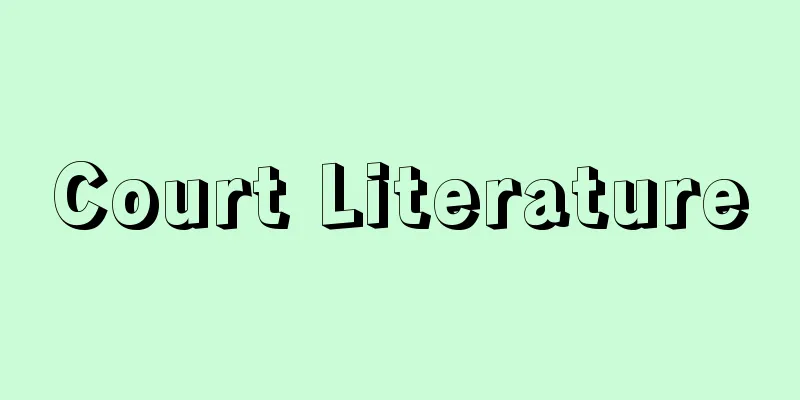Spectrum - spectrum (English spelling)

|
A band of light images arranged in the order of wavelengths (frequencies) obtained when visible light is broken down using a spectroscope. The word spectrum comes from the Latin spectare, and originally meant something that appears suddenly or unexpectedly, or in other words, something like a ghost. There is no clear record of who introduced the word into the currently established terminology of physics, but it was probably Newton. Here is an abridged translation of a passage from Newton's Optics (1704), Book 1, Part 1, Proposition 2, "Sunlight is composed of rays of light with different refractive indices." The description reads, "A circular hole of about 8 mm in diameter was made in the shutter of a window in a dark room, and a triangular prism was placed parallel to the floor with its apex facing downwards to let in sunlight. The refracted image was projected onto a wall about 5.5 meters away, resulting in the solar image or spectrum, which was 5.4 cm wide, 25 cm long, had clear straight sides, and was an oblong shape close to a rectangle with a blurred top and bottom, with one end red, followed by yellow, green, blue, and purple in that order." The word spectrum suddenly appears in this description. Judging from the fact that Newton, who carefully defined important concepts, introduced the word so casually, it seems that he had little awareness of the importance of the spectrum in physics, but the exact circumstances are unknown. Research on this spectrum began in the 19th century, when Wollaston discovered seven dark lines perpendicular to the length direction in the solar spectrum, and Fraunhofer published numerous dark lines known today as Fraunhofer lines, and this was followed by a series of research that became the basis of today's spectroscopy. Nowadays, the term spectrum is not limited to the visible range, but is used to refer to all electromagnetic ranges from radio waves to gamma rays, where radiation from a wave source is broken down and arranged in order of wavelength. Spectra can be classified into line spectra, in which emission lines are arranged discontinuously, band spectra, in which bright, wide bands are arranged instead of emission lines, and continuous spectra, which appear continuously bright like sunlight or incandescent light bulbs. These types of bright spectra are collectively called emission or luminescence spectra. In contrast, spectra observed as dark lines or bands against a bright background, such as the Fraunhofer lines seen in the sunlight spectrum, are called absorption spectra. When the entities that emit or absorb light are atoms, molecules, or solids, the respective spectra are often classified as atomic spectra, molecular spectra, and solid spectra. Molecular spectra are further divided into diatomic and polyatomic molecular spectra. In addition, electron paramagnetic resonance (EPR) spectra and nuclear magnetic resonance (NMR) spectra, which utilize the spin resonance of atomic nuclei, are also known for ionic crystals containing paramagnetic ions. EPR is sometimes called electron spin resonance (ESR). In addition, when the difference in the method of emitting light is an issue, it is classified into spark spectrum, arc spectrum, flame spectrum, low pressure gas discharge spectrum, vacuum discharge spectrum, electrodeless discharge spectrum, etc. The continuous spectrum emitted from a solid heated to a high temperature is called a thermal radiation spectrum, but radiation from a black body with zero surface reflectance is called a black body radiation spectrum and is particularly important. Light emission is treated as a phenomenon in which light is emitted when electrons excited to a high energy level in the light source atom, molecule, or solid transition to a state with a low energy level. This transition usually occurs naturally, so it is called a spectrum due to spontaneous emission or spontaneous emission. On the other hand, if a light wave of the same wavelength exists in the space around the light emitter, a transition occurs due to the induction of the transition, and if it is not considered that a process of light emission and absorption occurs along with it, a theoretical contradiction will arise. Einstein pointed out that the existence of stimulated emission was revealed. This phenomenon is used in laser light, and the laser oscillation spectrum is different from the spontaneous emission spectrum. Spectral observation can be thought of as a method of Fourier decomposing light, which changes over time in a complex way, into frequency components and determining the proportion of each frequency component in an analog manner. From this perspective, in addition to electromagnetic waves, spectrum can also be used to graph the proportion of each vibration component by applying the Fourier transform to sound waves and other vibration phenomena. There are also mass spectrometry spectra, which are arranged in order of mass. In mathematics, this is expanded further, and the coefficients obtained when an arbitrary function is expanded by a sequence of functions based on a certain base are called spectra. In more general fields outside of optics, it can also be used to comprehensively represent the distribution of something in a graph, for example, a graph showing a range of opinions from one extreme to the opposing opinion, with the horizontal axis representing "opinions" and the vertical axis representing "supporters." [Koji Ishiguro and Takahiro Kuga, June 17, 2015] [References] | | | | | | | |Source: Shogakukan Encyclopedia Nipponica About Encyclopedia Nipponica Information | Legend |
|
可視光線を分光器で分解したときに得られる、波長(周波数)の順に並んだ帯状の光の像のこと。スペクトルという語はラテン語のspectareに由来し、元来は突然出現するものとか、予期しないのに出現するもの、早くいえばお化けのようなものを意味した。現在定着している物理学的な用語としてこの語を導入したのはだれであるか記録のうえでは明確ではないが、おそらくニュートンではないかと思われる。ニュートンの『光学』(1704)第1巻第1部命題2「太陽光は異なった屈折性をもつ光線で構成されている」の一節を抄訳してみよう。「暗い部屋の窓のシャッターに直径約8ミリメートルの丸穴をあけ、そこに三角柱プリズムを頂点を下に床に平行に置いて太陽光を導入し、その屈折像を約5.5メートル離れた壁に投影したところ、幅は5.4センチメートル、上下の長さは25センチメートルの側面はくっきりした直線状で、上下端はぼやけた長方形に近い長楕円(ちょうだえん)形で一端が赤く、続いて黄、緑、青、紫という順に色づいたthe solar image or spectrumが得られた」という記述があり、そこに突然スペクトルという語が飛び出してくる。重要な概念には注意深く定義を与えて使っているニュートンがきわめて気軽にこの語を導入していることから判断すると、スペクトルのもっている物理学上の重要性に対する認識が薄かったのではないかと思われるが、正確な事情は不明である。このスペクトルの研究は、19世紀に入ってウォラストンが太陽スペクトル中に長さの方向と垂直に7本の暗線があることを発見し、フラウンホーファーが今日フラウンホーファー線として知られる数多くの暗線を発表したのに引き続き、続々と今日の分光学の基礎となった研究が展開された。 現在ではスペクトルという語は可視領域に限らず、電波からγ(ガンマ)線にわたるすべての電磁波領域で、波源からの放射を分解して波長順に並べて整理したものに対して用いられる。スペクトルの外観からは輝線が不連続に配列された線スペクトル、明るい幅のある帯が輝線のかわりに並んだ帯スペクトル、また、太陽光や白熱電球のように連続的に明るく見える連続スペクトルに分類される。これらのように明るく輝いて見えるスペクトルを総称して放出スペクトルあるいは発光スペクトルという。これに対し太陽光スペクトル中に見られるフラウンホーファー線のように明るい背景のなかの暗線または暗帯として観測されるスペクトルを吸収スペクトルという。光を放出したり吸収したりする主体が原子、分子、固体である場合に、それぞれのスペクトルを原子スペクトル、分子スペクトル、固体スペクトルとよんで分類することもよく行われる。分子スペクトルはさらに二原子分子スペクトルと、多原子分子スペクトルとに大別される。また常磁性イオンを含むイオン結晶では電子常磁性共鳴(EPR)スペクトル、原子核のスピン共鳴を利用する核磁気共鳴(NMR)スペクトルも知られている。EPRは電子スピン共鳴(ESR)とよばれることもある。 また発光させる方法の違いが問題となる場合は火花スペクトル、アークスペクトル、炎光スペクトル、低圧気体放電スペクトル、真空放電スペクトル、無電極放電スペクトルなどに分類される。高温に熱せられた固体から放射される連続スペクトルは熱輻射(ねつふくしゃ)スペクトルであるが、とくに表面の反射率がゼロの黒体からの放射は黒体輻射スペクトルとよばれ重要である。発光は、光源となる原子、分子あるいは固体の中で高いエネルギー準位に励起された状態にある電子が、低いエネルギー準位にある状態へと遷移する際に光が放出される現象として取り扱う。通常はこの遷移は自然に発生するので自然放出とか自発放出によるスペクトルという。これに対し、発光体の周りの空間に同じ波長の光波が存在すると、それに誘導されて遷移が生じ、それに伴って光の放出、吸収が生ずる過程もあると考えなければ理論的に矛盾が生ずることがアインシュタインによって指摘され、誘導放出の存在が明らかとなった。この現象を利用したのがレーザー光であって、レーザー発振スペクトルは自然放出スペクトルとは異なっている。 スペクトルの観測は、複雑に時間変化する光を周波数成分にフーリエ分解し、各周波数成分の含まれる割合をアナログ的に求める方法であると考えることができる。このような観点から、電磁波以外にも、音波その他の振動現象にフーリエ変換を施し、各振動成分の含まれる割合をグラフにしたものもスペクトルとよぶことがある。また質量分析スペクトルのように質量を大きさの順に並べたものもある。数学ではこれをさらに拡張して、任意の関数をあるベースにとった関数列によって展開した場合の係数をスペクトルとよんでいる。 光学以外のより一般的な分野では、何かの分布を網羅的にグラフなどで表現したものにも使われる。たとえば、ある極端な意見からそれと相反する意見までを、横軸を「意見」、縦軸を「賛同者」としてグラフ化したものなどがある。 [石黒浩三・久我隆弘 2015年6月17日] [参照項目] | | | | | | | |出典 小学館 日本大百科全書(ニッポニカ)日本大百科全書(ニッポニカ)について 情報 | 凡例 |
<<: Spread spectrum communication
Recommend
Customs Law - Kanzeiho
Law No. 61 of 1954. A complete revision of Law No....
Matsukawa Incident
At 3:09 a.m. on August 17, 1949 (Showa 24), a tra...
Pilgrimage to Koyasan - Koyamoude
There were two purposes for visiting the sacred Mo...
Coast Law - Kaiganho
This law (promulgated in 1956) aims to protect coa...
Parysatis
…Xerxes II, who succeeded his father, was killed ...
Aung San - Aung San (English spelling)
A leader of the Burmese (now Myanmar) independenc...
Daijizaiten - Daijizaiten
A Buddhist deity. Maheshvara is a translation of ...
Rauchnächte (English spelling)
…December was considered a dangerous and eerie mo...
Guanai white-bellied cormorant - Guanai white-bellied cormorant
…the accumulation of urine and feces from wild se...
Karukayado - Karukayado
This is a hall in Saikoji Temple, Ishido-cho, Kita...
Hadrosaur (Duck-billed Dragon)
A representative group of dinosaurs belonging to t...
Acetophenone - acetophenone
An aromatic ketone. It is also known as methyl ph...
Bedridden elderly person - netakiri roujin
The problem of bedridden elderly people has become...
Inasa [town] - Inasa
A former town in Inasa County, western Shizuoka Pr...
Kuro Hosho
Noh actor. The nickname of the head of the Hosho ...





![Osumi [town] - Osumi](/upload/images/67cb15d4513f3.webp)



